Irene was very devoted to her parents and through various works, is preserving memories of them for future generations.My name is Irene Ann Matherne Moore. I am the daughter of Elisabeth and Gilbert Matherne.
My mother, Elisabeth Wendel Hämmerling (later Matherne), a German citizen, lived in Kassel, Germany with her husband and three children. During WW2, the night of October 22, 1943 proved to be a most tragic one. On this night she suffered the loss of both her home and her family.
Kassel had been under attack since the year 1940 by British, and later by American bombers. Their mission was to destroy the local war material manufacturing industry. On the night of October 22, 1943, the city was almost completely destroyed.
My Mother told me many stories of her life during the war. She would begin with a statement about her children who died that terrible night in Kassel. I would ask questions about my brother and sister, wanting to know how they died. She would begin to tell me what happened and before she could finish the story, she would be crying and I would be crying too. Following is a very condensed version of one event in the life of my mother. It was the night of October 22, 1943.
The family lived at Bettenhäuser Strasse 10 in Lower Kassel. That is, across the Fulda river from the main part of the city. At the sounds of the air raid warning and nearby explosions, Elisabeth and her children, Dieter, Ludwig and Edelgard ran into the cellar. Erna Wendel, mother of Elisabeth, was at home and joined them quickly. Hans Hämmerling, husband of Elisabeth, and George Wendel were not home. Hans was at work in the nearby town of Waldau. With the signal of attack sounding throughout the city and towns, he hurried home from the air base in Waldau as the bombs began bursting everywhere.
The bombing caused the river to flood the streets and water was coming up high into the cellar. The apartment was on fire. Elisabeth, seeking a way out, crawled into a tunnel which connected other cellars in the same building. She had to find a way out. Sliding through the tunnel on her back, with Dieter on her stomach, (Dieter was one year and three months old at the time) she had to scoot her way to the other side in order to find out if it was open. If she were able to find an exit, she could help her family escape from the rising waters. As she came to the other side, she found that it was blocked off with a beer barrel. Mother told me the people must have done this because the cellar was full and could hold no more people. Now Elisabeth must scoot her way back to her own cellar while carrying Dieter on her stomach. She soon found that a very large lady had entered the tunnel after she did and had died there. Elisabeth had to push the dead lady out with her feet, as she continued to make her way by scooting back to her cellar. Finally at the end of the tunnel she pushed the dead woman’s body out onto the cellar floor.
They were greeted finally by Hans who made it back safely. Hans had to think quickly to make a decision on how to get his family safely out of this burning building before it came crashing down on all of them. Hans grabbed a wet blanket and threw it over Elisabeth and his son Dieter and told her to run to a nearby park where he would meet with her as soon as he could. Elisabeth escaped from the building and took off running down the street with Dieter in her arms, knowing that Hans would soon be following her with the children and her Mother. Fire was everywhere and bombs were still falling. People were screaming and running in panic. The city was a burning inferno.
Mother remembered: "The buildings were all on fire and falling down on each side of me. I ran through the streets with Dieter in my arms. It was dark like night. The smoke was like a cloud, it was so thick. The streets were all broken up, hot with fire. My shoes were burning. The soles just curled up. Then I had no more shoes. My feet and hair were burning. Phosphorous got on me and Dieter, all over. I ran to the Fulda to wet our burning clothes and to wash off the phosphorous.”
She did arrive at the park eventually and waited there with other survivors until ordered to leave because of an unexploded bomb in their midst. When the attack was over and she ventured back to her home she saw that it was a pile of rubble. She went from place to place searching for her family hoping they had gotten out. Finally with little hope left, she started searching through all the dead bodies that were lined up on the streets to be claimed and buried. She searched the rows of bodies for three days.
Again she went back to the place where her home used to be. Now she saw soldiers digging in the rubble. Her eye caught the sight of green knitted socks. Socks she herself had knitted were dangling from the feet of a young boy. A soldier was carrying out her son, Ludwig. She collapsed with grief and ended up in a hospital where she spent the next three weeks. The bodies of her husband, children and mother had been found huddled together in the rubble.
Years later it was discovered that Mother had been listed among those who had died, along with the rest of the family at Bettenhäuser Strasse 10. No doubt the body of the woman who had died in the tunnel was thought to have been that of my mother’s.
After that terrible night of October 22/23, 1943, would follow several years of struggle for survival for my mother. The bombing would continue and shelter would quite often have to be hunted again. The necessities of life were rare for the German people during those years. A meager existence was about all anyone could hope for until, even some years after the war’s end.
With the defeat of Hitler’s Germany came the occupying forces of the United States into the area. This would mark a turning point in her life. In late 1946 Gilbert Matherne arrived at the Rothwesten kaserne near Kassel. He was an American soldier attached to the 1st Constabulary Regiment. Mother had a job now singing at the Café Reiss in Kassel and it was here they met. They would eventually marry and Gilbert would bring Elisabeth and her surviving child, Dieter, along with their very own child, Gilbert, Jr. home to Louisiana. I came along a little later followed by other children and grandchildren.
Mother and Dad are both gone now. Often I feel as though a part of me belongs back there with my mother during those trying times she so vividly related to me. And another part of me belongs with my dad, the hero who rescued her and brought her to America.
Irene Moore
February 21, 2004
The following three items were borrowed from the book Die Zerstörung Kassels im Oktober 1943 (The Destruction of Kassel in October 1943) by Werner Dettmar. I think they pretty well portray the plight of the people of Kassel.
7 days after the attack fires were still burning in Kassel and a smoke haze lay over the smouldering ruins of the town. The central city area presented a scene of utter devestation, and damage extended to the industrial districts on both sides of the river Fulda as well as to the suburbs. In the older part of the town, the main business and shopping centre between the river and the Konigs Platz, no building was left intact and few remained standing. In the adjacent districts of Altstadt, Ober Neustadt where there are many public and administration buildings, and Unter Neustadt, which is highly commercialised, 96% of all property was destroyed.Overwhelming despair After the smoke clearedUnter Neustadt was where the family in this story lived.

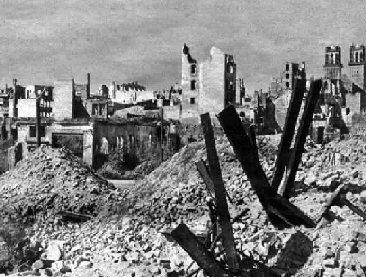
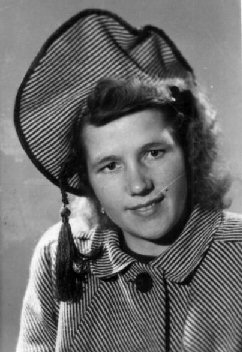

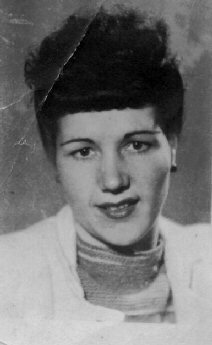
Elisabeth before
the attack
1948
1948
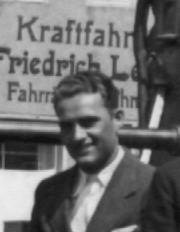

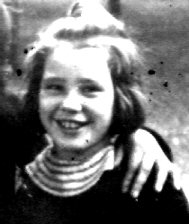
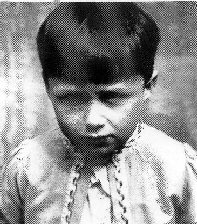
Husband Hans
Mother Erna
Daughter Edelgard
Son Ludwig
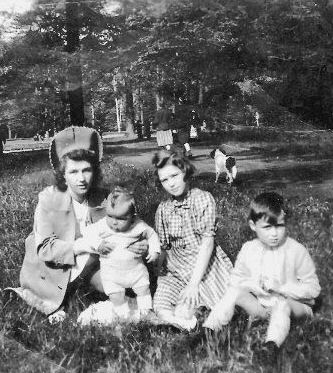
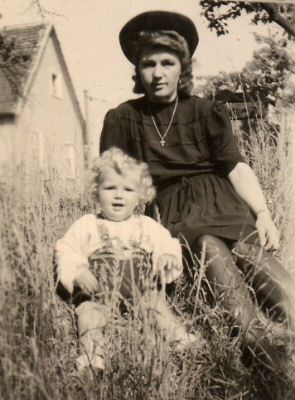
Elisabeth Dieter
Edelgard Ludwig
Survivors: Dieter and Elisabeth
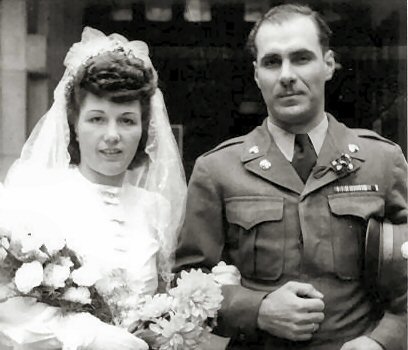
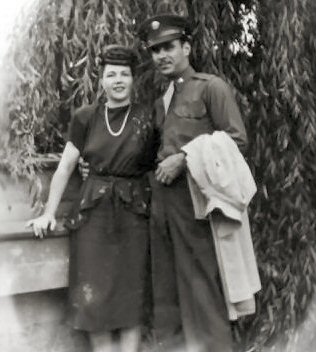
Elisabeth and Gilbert Matherne
and a little later
is the official Web Editor of
The United States Constabulary
1946 - 1952
